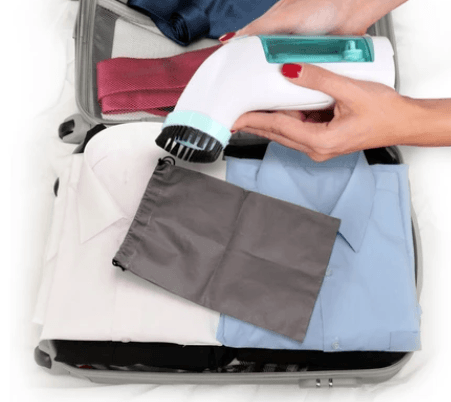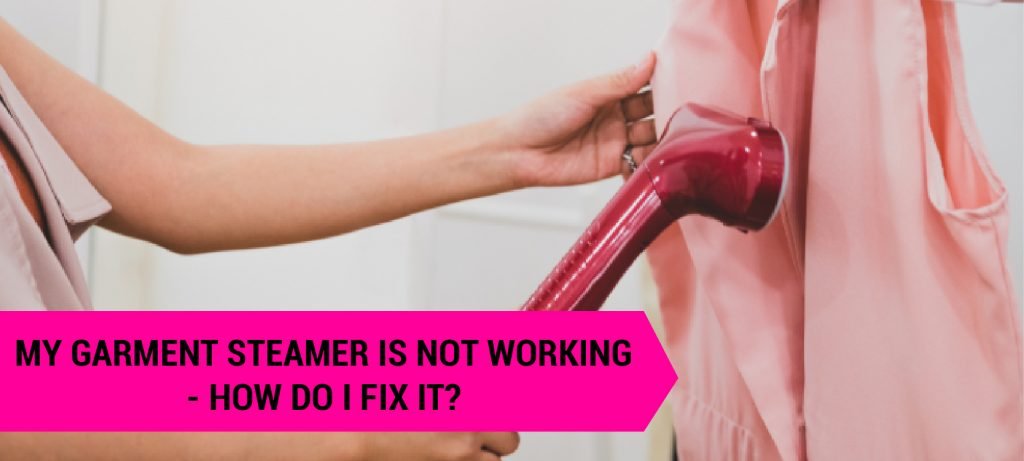My Garment Steamer Is Not Working - How Do I Fix It?
When taking your clothing to the dry cleaners is time and gas money that you don't have, a clothes steamer can be indispensable. Once this gadget goes on the fritz, though, you might start to panic, especially if you have garments that you need steamed as soon as you can get to it. If you don't know what the problem is or can identify it but have no solution, don't freak out. I've made this brief troubleshooting guide to help you deal with your garment steamer's most common malfunctions. (1)
No Steam
First and foremost, if your garment steamer is new and fresh out of the package, it isn't going to start producing steam immediately. A lack of steam from a new garment steamer only means that no water is circulating through the system yet, and luckily this is only an issue the first time you use it. Hold down the steam trigger for about a minute to get the water circulating. You'll be able to get the steam going in no time.

If the garment steamer isn't new, however, you may be out of water. Check the water reservoir inside of the machine and fill it up if it's empty. Alternatively, the manufacturers may have positioned the water reservoir improperly when installing it within the device. Try taking the little water tank out and putting it back in the correct way.
No Power
When your garment steamer doesn't turn on at all, this could be an issue with the power outlet. A fuse might have blown, causing the circuit breaker to pop back up and cut the power. Check your breaker box to see if everything is in working order.
If all is well, perhaps the plug isn't wholly pushed into the wall, or the prongs have bent to angles that don't fit - fortunately, it's usually easy to push them back towards their original position. If nothing seems to work, there might be a chance of corrosion when it comes to the prongs of your plug. In this case, you may need to replace the plug entirely.
steamer Not Heating up
Garment steamers aren't ready to go the second you turn them on. You'll need to give them about 45 seconds to a minute to heat up so that they can steam the water properly.

Some garment steamers come with a light that flashes while heating up and turns off when it's ready. If your device comes equipped with one of these lights, pay attention to it. Once the light turns off, your garment steamer should be hot and ready to go.
Condensation on Head
You might notice that your steamer makes strange gurgling noises and that droplets of condensation form on the head of the machine. These are signs that you probably have an issue with the steam hose inside of your device. Sometimes the steam hose gets bent and prevents steam from flowing correctly.
Sometimes this happens if you have a vertical garment steamer that you lay down horizontally or a horizontal steamer that you stand up vertically, so be careful how you handle your garment steamer.
To fix the issue with your steam hose, locate the tube and lift it so that no part is bent. The condensation will be allowed to disperse when you apply this technique to the hose. Once you put the tube back, the kinks shouldn't be present anymore, and the steam should flow adequately through the appliance once more.
Limescale Buildup
The steam from your garment steamer may come out in intermittent bursts, and an investigation may lead you to find a whitish buildup inside of your device. That buildup is limescale, which is formed by the release of the minerals in the water once it's steamed. These minerals collect and form deposits on the inside of your steamer. Usually, this buildup is primarily calcium and can be taken care of with ease.

If your steamer doesn't automatically come with a de-calcify setting, you'll need to take clean the device yourself. Turn the machine off and unplug it, then let it cool down for an hour, so you don't get yourself burnt while you're trying to clean the device. Make a homemade mixture of water and vinegar - with two cups of vinegar to one cup of water - and take it to the steamer with a washcloth.
While it might be fine to leave the inside wet, since it is steam that you're dealing with, drying the cleaned part of the device with a paper towel once you finish will give you a better chance at picking up any spots of limescale you might have missed.
Troubleshooting before throwing it away
Your treasured garment steamer can get you worried once it starts giving you issues. Chances are that you don't need to toss it and buy a whole new one, however. Often, it's something simple such as a faulty chord, a bent hose, or a bit of mineral buildup. Hopefully, you've found your problem on our list, and remember to keep taking good care of your garment steamer to keep the issues minimal in the future.

